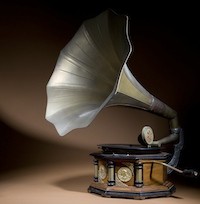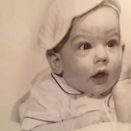America's New Sound

I hope listening to this podcast will be like getting the door to your mind kicked open.
I wish I’d been the one to turn that phrase – getting the door to your mind kicked open.
But it was Bruce Springsteen describing a moment in a Bob Dylan song – a moment you’ll hear in this week’s CNN Profiles.
It’s one of the many delights delivered by our guest, historian Sean Wilentz, who has written “360 Sound,” a book on the oldest label in the recording industry: Columbia Records.
The story begins in the 1870s, with Thomas Edison, who was pretty obsessed at the time with the technology of sending messages long distances.
Edison was putting the finishing touches on one of his new machines, the telegraph, when, writes Wilentz, “he hit upon the idea of transcribing sounds on a cylinder wrapped in tinfoil.”
And so, the phonograph was born.
But even the vision of visionaries has limits.
Edison, Wilentz writes, put together a list of ten possible uses of the phonograph. Number one was dictation. Two: Phonographic books for the blind. Three: The teaching of elocution. And fourth on Edison’s list: recorded music.
In fairness, that first Edison phonograph could not reproduce music well. But Edison’s phonograph evolved, just as all great technologies must.
And soon, as Wilentz documents in his history of Columbia Records’ 125 years, listening to music at home – music made by professionals not created by family members and friends – would change the sound of our lives.
A godsend for parents who could afford it. As a Columbia ad touted in the early years of the 20th century:
“Parents find this great entertainer the best and most wholesome means of making home more attractive than the street.”
We’ll be sampling a lot of music in this show – from marching band master John Philip Sousa, whose father refused to let him pursue his dream, to Billie Holiday singing a blues standard I never realized she co-wrote, to Sinatra, Dylan, and more.
It’s striking how little uniformity there has been under the umbrella of this single label.
Which leads to a challenge that we in the journalism profession share with the music industry and many others– the challenge to create a distinctive voice.
How does a business that’s all about sound thrive when it doesn’t have a distinctive voice – an identifiable sound?
Sean Wilentz’s answer may kick open the door to your mind.

